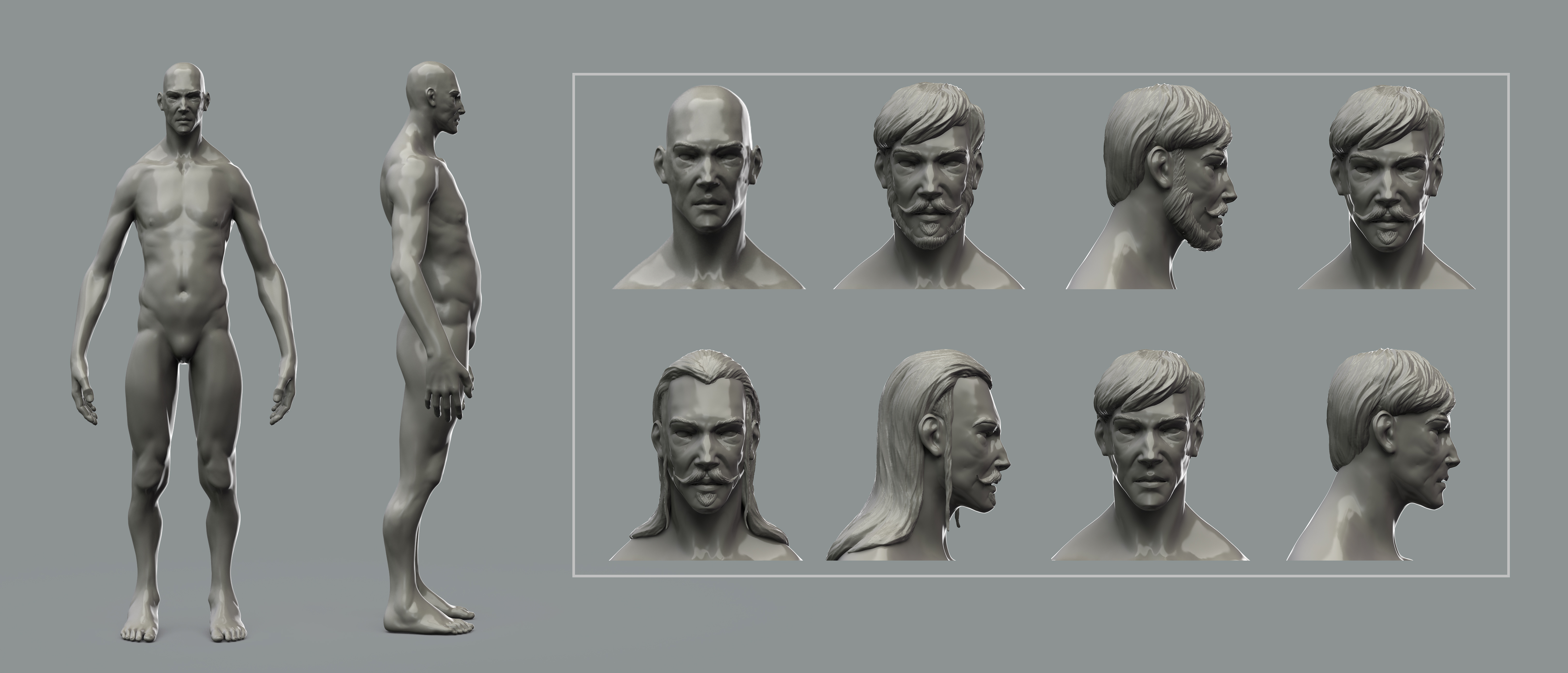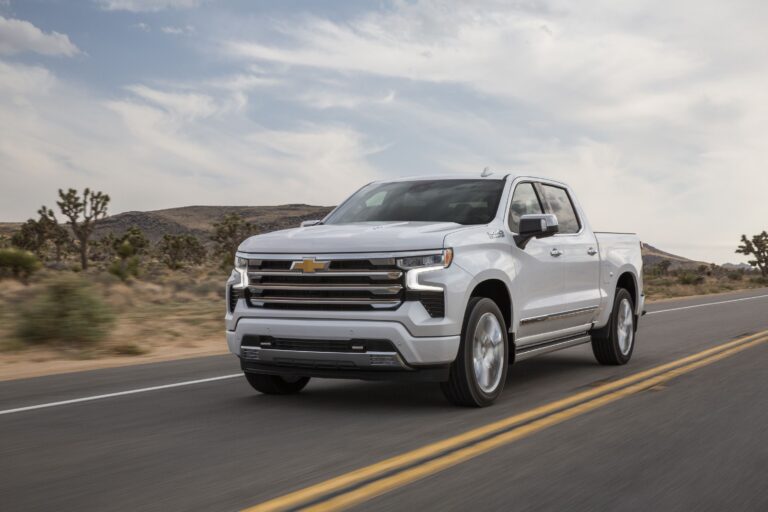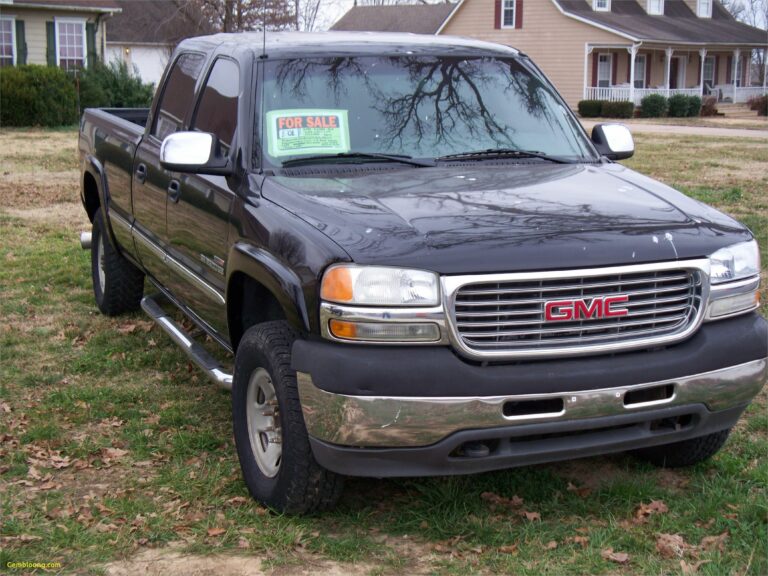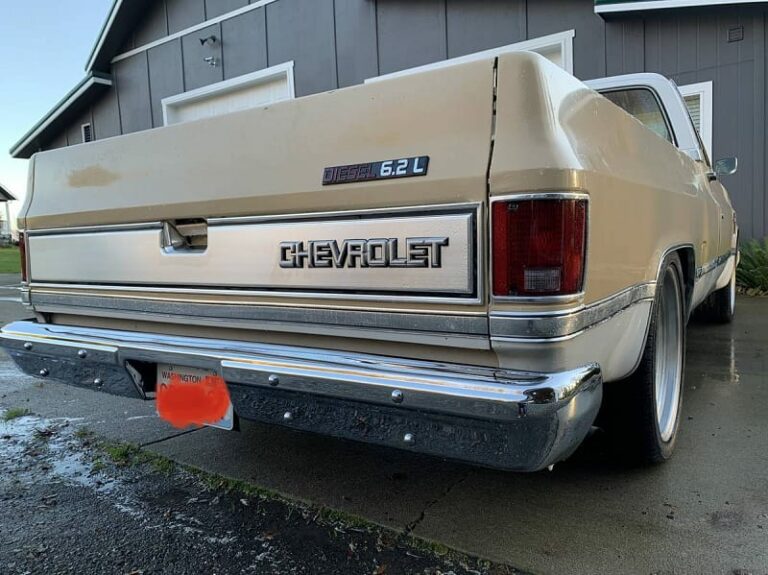Height Of A 26 Ft Box Truck: A Comprehensive Guide
Height Of A 26 Ft Box Truck: A Comprehensive Guide cars.truckstrend.com
Introduction: Navigating the Vertical World of Commercial Transport
The 26-foot box truck is a ubiquitous sight on roads across the nation, serving as the backbone for countless businesses, from moving companies and last-mile delivery services to logistics providers and individual entrepreneurs. These versatile vehicles offer a significant cargo capacity, making them ideal for transporting large volumes of goods. However, beyond their length and payload, one dimension stands paramount in ensuring safe and efficient operation: their height.
Height Of A 26 Ft Box Truck: A Comprehensive Guide
Understanding the "Height Of A 26 Ft Box Truck" is not merely a technical specification; it’s a critical safety imperative and an operational necessity. Failing to account for this crucial measurement can lead to catastrophic accidents, costly damage to property and vehicles, severe legal penalties, and significant delays. From navigating low bridge clearances and tunnels to accessing loading docks and parking facilities, the vertical dimension dictates where a 26-foot box truck can and cannot go. This comprehensive guide will delve into every aspect of a 26 ft box truck’s height, providing essential information for drivers, logistics managers, and anyone interacting with these vital commercial vehicles.
Understanding the Standard Height of a 26 Ft Box Truck
While "26 ft" refers to the length of the cargo box, the overall height of a 26 ft box truck typically ranges between 12 feet 6 inches (12’6") and 13 feet 6 inches (13’6") from the ground to the highest point of the vehicle. This measurement includes the chassis, tires, the cargo box itself, and any roof-mounted equipment or aerodynamic fairings.
It’s crucial to understand that this is an average range. No two 26 ft box trucks are identical in every dimension, even from the same manufacturer. Variations arise due to:
- Manufacturer Specifications: Different truck manufacturers (e.g., Ford, Isuzu, Hino, Freightliner, International) design their chassis and box bodies with slight variations.
- Chassis Type: Some trucks might be built on a "low-profile" chassis, which can slightly reduce the overall height, while others use standard or heavy-duty chassis.
- Box Construction: The specific construction of the cargo box, including its floor height relative to the ground and roof design, contributes to the final measurement.
- Roof-Mounted Equipment: Features like refrigeration units (for "reefer" trucks), air conditioning units, or even external lighting can add several inches to the truck’s total height.
- Aerodynamic Features: Many modern box trucks are equipped with roof fairings or air deflectors designed to improve fuel efficiency. These often add to the highest point of the vehicle.

Always remember that the stated "maximum height" for regulatory purposes includes all parts of the truck, even antennas or air horns, if they are the highest point.
Factors Influencing the Actual Height

Several dynamic and static factors can influence the precise height of a 26 ft box truck, making it imperative for drivers to know their specific vehicle’s measurements.
- Suspension Type and Load:
- Spring Suspension: While generally fixed, a heavily loaded truck will "squat" or compress its suspension, slightly reducing its overall height. An empty truck will sit higher.
- Air Ride Suspension: Trucks equipped with air suspension systems can have their ride height adjusted. While designed for comfort and cargo protection, improper inflation or system malfunction can alter the height.

- Tire Size and Inflation: Different tire sizes (diameter) and proper inflation levels can subtly affect the ground clearance and, consequently, the overall height. Underinflated tires will lead to a slightly lower vehicle.
- Aerodynamic Roof Fairings/Deflectors: These essential components, designed to reduce drag and improve fuel economy, are often the highest point of the truck. Their design and mounting can vary, impacting the overall measurement.
- Refrigeration Units (Reefers): For refrigerated box trucks, the "reefer" unit mounted on the front top of the cargo box is typically the highest point and adds significantly to the truck’s height compared to a standard dry freight box.
- Custom Modifications: Any aftermarket additions, such as custom lighting, roof racks (though less common on box trucks), or specialized equipment, can alter the truck’s maximum height.
Why Height Matters: Critical Considerations
The height of a 26 ft box truck is not a trivial detail; it’s a critical dimension that impacts safety, legality, and operational efficiency.
- Bridge and Tunnel Clearances: This is arguably the most critical safety concern. Overpasses, bridges, and tunnels often have clearly marked height restrictions. Striking a bridge (a "bridge strike") can cause severe structural damage to the bridge, catastrophic damage to the truck, serious injuries or fatalities, and massive traffic disruptions.
- Parking Garages and Structures: Many urban areas and commercial buildings have height-restricted parking garages or covered loading docks that are inaccessible to taller vehicles.
- Loading Docks and Bays: While less about overall height and more about bed height, the truck’s total height can sometimes restrict access to certain enclosed loading bays or facilities with overhead structures.
- Utility Lines and Tree Branches: Driving in residential areas, rural roads, or construction zones requires vigilance for low-hanging utility lines (power, telephone, cable) and tree branches, which can cause damage or create hazards.
- Legal Regulations: State and federal regulations govern maximum vehicle dimensions, including height. While 26 ft box trucks are generally within standard legal limits (typically 13’6" or 14′ in most states), exceeding these limits without proper permits can result in hefty fines.
- Fuel Efficiency: Taller trucks generally present a larger frontal area, leading to increased aerodynamic drag. This directly impacts fuel consumption, making height an indirect factor in operational costs.
- Vehicle Stability (Less Direct): While primarily related to cargo distribution and center of gravity, a very tall truck with a high center of gravity can be more prone to rollovers on sharp turns, especially if improperly loaded.
Measuring Your 26 Ft Box Truck’s Height
Knowing the exact height of your specific truck is paramount. Do not rely solely on general specifications or assumptions.
How to Measure Accurately:
- Find a Flat, Level Surface: Park your truck on a completely flat and level surface, such as a large parking lot or concrete pad. Ensure the ground is not uneven, which could skew your measurement.
- Ensure Proper Tire Inflation: Verify that all tires are inflated to the manufacturer’s recommended pressure.
- Use the Right Tools: A long measuring tape (at least 25-30 feet), a telescopic measuring stick, or a laser distance meter are ideal.
- Identify the Highest Point: This is usually the top of the cargo box, a roof fairing, or a refrigeration unit. Walk around the truck and visually inspect all angles.
- Take the Measurement:
- With a Measuring Tape: Have a second person hold the end of the tape on the ground directly below the highest point. Extend the tape straight up to the highest point and read the measurement.
- With a Telescopic Stick: Extend the stick until it touches the highest point, then read the measurement from the stick.
- With a Laser Distance Meter: Place the meter on the ground directly below the highest point and aim it straight up. Some meters have a "vertical distance" mode.
- Measure Both Empty and Loaded (Optional but Recommended): A fully loaded truck may sit slightly lower due to suspension compression. If your operations frequently involve heavy loads, it’s wise to know both measurements.
- Record and Display: Once you have the precise measurement (e.g., 12’10"), clearly write it down and prominently display it inside the truck’s cab, perhaps on the sun visor or dashboard, where it’s easily visible to the driver.
Tips for Safe Operation and Route Planning
Operating a 26 ft box truck safely requires more than just driving skills; it demands meticulous planning and constant awareness of the vehicle’s dimensions.
- Always Know Your Exact Height: This cannot be stressed enough. It’s your first line of defense against bridge strikes.
- Utilize Truck-Specific GPS Systems: Standard car GPS systems do not account for vehicle dimensions. Invest in or ensure your company provides a commercial truck GPS that allows you to input your truck’s height, weight, and length. These systems will then route you around low clearances, weight-restricted roads, and other truck prohibitions.
- Pay Attention to Road Signage: Always be vigilant for signs indicating bridge clearances, tunnel heights, or other overhead obstructions. Do not assume the road is clear. "LOW CLEARANCE" signs are there for a reason.
- Plan Your Route in Advance: Before starting your journey, especially to unfamiliar destinations, review your route on a truck-friendly map or GPS. Look for potential obstacles and alternative routes.
- When in Doubt, Don’t Go Under: If you’re unsure about a clearance, or if the marked height looks questionable (e.g., due to repaving raising the road level), do not attempt to proceed. Find an alternative route. It’s far better to be late than to cause an accident.
- Have a Spotter: When backing into tight spaces, loading docks, or areas with overhead obstructions, always use a spotter to guide you and warn you of any hazards.
- Understand Legal Height Limits: Be aware of the maximum legal height limit for commercial vehicles in the states you will be operating in. While 26 ft box trucks are generally within these limits, knowledge is power.
- Account for Road Conditions: Potholes, speed bumps, or uneven surfaces can cause the truck to bounce, momentarily increasing its effective height and potentially leading to contact with overhead objects.
Common Scenarios and Solutions
Scenario 1: Encountering a Low Clearance Sign You Didn’t Anticipate
- Solution: Stop immediately and safely before the obstruction. Do not proceed. Check your truck-specific GPS for an alternative route. If no obvious route is available, safely pull over and consult a map or your dispatcher. Never attempt to "squeeze under." Backing up might be necessary, so ensure the path behind you is clear.
Scenario 2: Arriving at a Loading Dock with Limited Overhead Space
- Solution: Before attempting to back in, assess the overhead clearance. If it’s too tight, inform the receiving personnel. They may have an alternative dock, a different method for unloading (e.g., using a forklift to unload from the side if accessible), or instruct you to wait for another solution.
Scenario 3: Driving on a Residential Street with Low-Hanging Tree Branches
- Solution: Proceed with extreme caution. If branches are unavoidable and you believe they will scratch or damage the truck, try to find an alternative route. If it’s a delivery point, inform the recipient of the issue. Avoid driving through areas where power lines are visibly low.
Table: Associated Costs and Operational Considerations for 26 Ft Box Trucks
While the height itself doesn’t have a price, understanding its implications is crucial for overall operational costs and decision-making. Here’s a table outlining various cost and operational aspects where the dimensions, including height, play a role.
| Category | Description | Cost/Consideration | Height Relevance |
|---|---|---|---|
| Rental Costs | Daily, weekly, or monthly rates for renting a 26 ft box truck. | Varies widely: $100-$300/day, $500-$1500/week, $2000-$4000+/month | Standard dimensions (including height) are part of the rental package. |
| Purchase Price (New) | Cost to buy a brand-new 26 ft box truck. | $60,000 – $120,000+ (depending on chassis, engine, features like reefer, liftgate) | Refrigerated units (reefers) and specific chassis designs adding height can increase cost. |
| Purchase Price (Used) | Cost to buy a pre-owned 26 ft box truck. | $20,000 – $70,000+ (depending on age, mileage, condition, features) | Same as new; condition of roof/fairings (often highest point) affects value. |
| Fuel Costs | Ongoing expense for diesel or gasoline. | Highly variable (MPG 6-10, based on load, speed, aerodynamics) | Taller trucks with larger frontal areas experience more aerodynamic drag, increasing fuel consumption. |
| Insurance Premiums | Commercial auto insurance rates. | Varies greatly: $3,000 – $15,000+ annually (based on coverage, driving record, cargo) | Larger vehicles (including height) are generally considered higher risk by insurers. |
| Maintenance & Repairs | Routine servicing, tire replacement, unexpected repairs. | Variable: $5,000 – $15,000+ annually | Damage from bridge strikes or overhead collisions (due to height) leads to costly repairs. |
| Tolls & Permits | Costs for using toll roads, bridges, or special permits for oversized loads (less common for 26ft). | Variable | Some tolls are dimension-based. Exceeding standard legal height requires special permits (rare for 26ft). |
| Driver Training & Safety | Investment in driver education on vehicle dimensions, route planning, and defensive driving. | Ongoing cost | Crucial for preventing height-related incidents and ensuring safe operation. |
| Potential Damage/Fines | Costs incurred from bridge strikes, property damage, or violations of height restrictions. | Potentially very high: Tens of thousands to millions for bridge damage, significant fines | Direct consequence of misjudging or ignoring truck height. |
| Specialized Equipment | Addition of aerodynamic fairings, specialized lighting, etc. | Fairings: $500 – $2,000+ | Fairings add height but reduce fuel costs over time. |
Frequently Asked Questions (FAQ)
Q1: What is the average overall height of a 26 ft box truck?
A1: The average overall height typically ranges from 12 feet 6 inches (12’6") to 13 feet 6 inches (13’6").
Q2: Does the height vary significantly by manufacturer?
A2: Yes, while they fall within a general range, specific models from manufacturers like Ford, Isuzu, Hino, or Freightliner can have slight variations in their exact height due to chassis design, box construction, and standard features.
Q3: How do I accurately measure my specific truck’s height?
A3: Park on a flat, level surface, ensure tires are properly inflated, and use a long measuring tape, telescopic stick, or laser meter to measure from the ground to the highest point of the vehicle (e.g., roof, fairing, reefer unit). Record and display this measurement in the cab.
Q4: What are the legal height limits for box trucks in the U.S.?
A4: Most U.S. states have a maximum legal height limit of 13 feet 6 inches (13’6") or 14 feet. 26 ft box trucks are generally designed to be within these standard limits, but always check state-specific regulations for your route.
Q5: Can a 26 ft box truck fit under a standard residential garage door?
A5: No, absolutely not. A standard residential garage door opening is typically 7 to 8 feet high, while a 26 ft box truck is at least 12.5 feet tall. Attempting this will result in severe damage.
Q6: What should I do if I encounter a "Low Clearance" sign on my route?
A6: Stop immediately and safely before the obstruction. Do not attempt to pass. Consult your truck-specific GPS for an alternate route or carefully back up if safe to do so, then find another way. Never guess or take a risk.
Q7: Do refrigerated (reefer) box trucks have different heights than dry freight trucks?
A7: Yes, typically. Refrigerated units are mounted on top of the cargo box and are often the highest point of the truck, adding several inches to the overall height compared to a standard dry freight box truck.
Conclusion: Heightened Awareness for Safe Operations
The "Height Of A 26 Ft Box Truck" is far more than just a number on a spec sheet; it’s a critical dimension that dictates safety, compliance, and operational feasibility. For anyone involved in the transportation industry, particularly those operating or managing fleets of 26 ft box trucks, a thorough understanding of this measurement is non-negotiable.
From the standard ranges and influencing factors to the profound implications for safety and legal compliance, every aspect underscores the importance of heightened awareness. By meticulously measuring your vehicle, utilizing truck-specific navigation, diligently observing road signage, and planning routes with precision, drivers and operators can mitigate risks, prevent costly accidents, and ensure the efficient flow of goods. In the world of commercial transport, knowing your truck’s height isn’t just good practice—it’s the cornerstone of responsible and successful operations.






